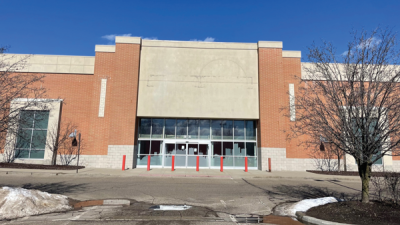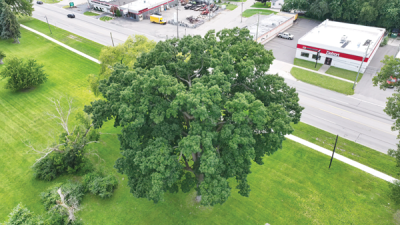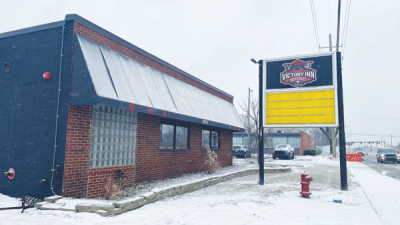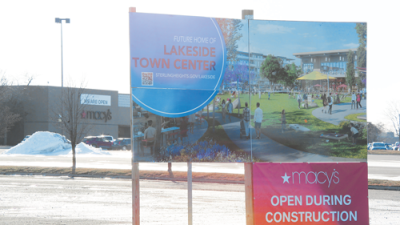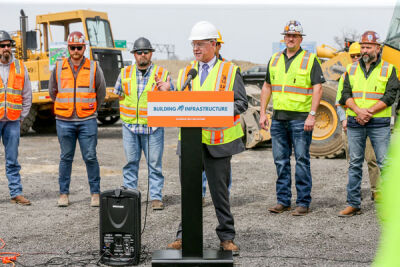
Brad Wieferich, the acting director of the Michigan Department of Transportation, speaks to the media and others gathered at the press conference.
Photo by Patricia O’Blenes
NOVI — Spring has officially sprung as Michigan’s unofficial orange state “flowers” — construction barrels — are in full bloom.
Gov. Gretchen Whitmer, along with U.S. Reps. Debbie Dingell and Haley Stevens, and Michigan Department of Transportation acting Director Brad Wieferich, kicked off this construction season with a tour of a construction site at Interstate 96 and Beck Road in Novi on Tuesday, April 11. The site is part of the I-96 flex route project in Oakland County.
“This is an exciting project,” Whitmer said. “This flex lane, I think we’re going to see, it’s really going to improve the quality of life and safety in this business corridor.”
This will be the second flex route that the state has implemented; the first runs along U.S. 23 between M-14 and M-36 in Washtenaw County. The new flex route will go from Kent Lake Road to the Interstate 275/Interstate 696/M-5 interchange. It will feature intermittent shoulder use as lanes and ramp metering at eight ramps within the project limits, according to the state website.
An active traffic management system will be installed as well. The system will post variable speed advisories and traveler information using electronic message boards that will be positioned along the route. The median shoulders will be rebuilt to be used as additional lanes during peak travel periods, special events, maintenance activities, and incidents or crashes, the website states.
“This is a particularly exciting project because it not only rebuilds a major corridor promising a smoother ride for the hundreds of thousands of people who use this every day, but it also will relieve a lot of congestion,” said Wieferich.
Wierferich said that a study conducted in 2019 showed a 17% decrease in highway crashes along the Washtenaw County flex route and a need to expand it. He said that since 2019, the state has invested more than $9 billion into the trunkline highway program, including investments for Whitmer’s Rebuilding Michigan program. Trunkline highways are those with numbers and prefixes of “I,” “U.S.” or “M.”
“Most importantly at this moment I want to thank Michiganders for their patience as we are rebuilding our state,” Whitmer said.
“Please recognize that instead of doing patches every couple of years, we are actually rebuilding this damn road, so you don’t have to deal with continued superficial improvements. So, when you do it right, you build it to last, and that’s what we’re doing here,” she said.
According to Whitmer, the $269 million I-96 flex project, now in its second year of construction, has created 3,416 jobs for Michigan workers. Whitmer stressed the importance of practicing construction zone safety to protect the workers.
“When you see an orange barrel, it might not make you happy, but it should remind you to slow down and appreciate we’re getting work done. But there’s men and women on the side of the road risking their lives. Please be careful and stay alert,” she said.
“The state has been doing an excellent job of getting out there,” said Dingell. “I’m sick of orange barrels and I’m, like all of you, experiencing more congestion than I want, but we’re fixing the roads.”
The flex route project is funded through the Rebuilding Michigan program. The governor established the fund to rebuild the state highways and bridges that are critical to the state’s economy and carry the most traffic. As of April 11, workers had laid down 16,000 lane miles of roads and 12,000 bridges since the program was implemented, according to Krystle Schnell, a health and safety instructor at the Construction Career Center in Howell. For more information, visit drivingoakland.com.
 Publication select ▼
Publication select ▼





















